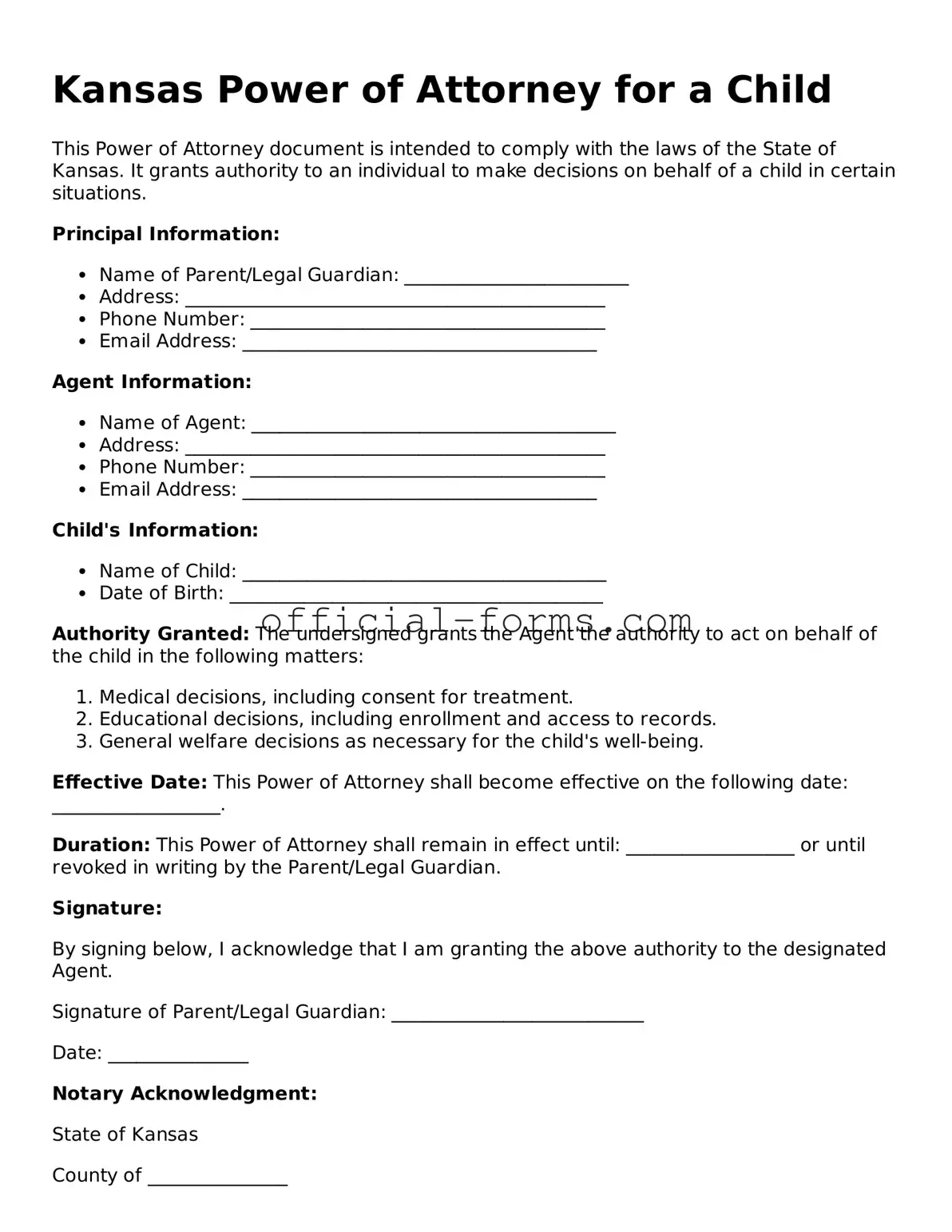Filling out the Kansas Power of Attorney for a Child form can be straightforward, but many individuals encounter common mistakes that can complicate the process. One frequent error is failing to provide complete information about the child. This includes neglecting to include the child’s full name, date of birth, and address. Incomplete information can lead to confusion and may delay the legal authority granted to the designated agent.
Another mistake often made is not specifying the duration of the power of attorney. The form requires the individual to indicate how long the authority will last. If this section is left blank, it may result in the power of attorney being considered invalid. Clearly stating the start and end dates helps to avoid any ambiguity about the agent's responsibilities.
Many people also overlook the importance of signatures. Both the parent or guardian granting the power of attorney and the agent accepting it must sign the document. Failing to obtain these signatures can render the form unenforceable. Additionally, some individuals forget to have the document notarized, which is a crucial step in many cases to ensure its legitimacy.
Another common oversight is not understanding the limits of the authority being granted. The form allows parents to specify what decisions the agent can make on behalf of the child. If these powers are not clearly defined, the agent may not have the authority to act in certain situations, leading to potential issues when decisions need to be made.
Additionally, individuals sometimes use outdated versions of the form. Laws and requirements can change, so it is essential to ensure that the most current version of the Kansas Power of Attorney for a Child form is being used. Using an outdated form may result in legal complications or the rejection of the document.
Lastly, many overlook the need for copies. After completing the form, it is important to make several copies for the agent, schools, and any other relevant parties. Relying solely on the original document can create challenges if it is lost or misplaced. Ensuring that multiple copies are distributed helps to maintain clarity and access to the necessary legal authority.
